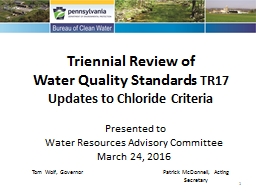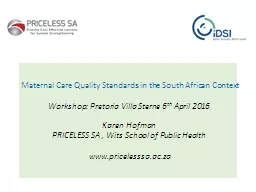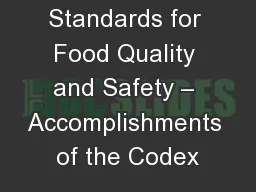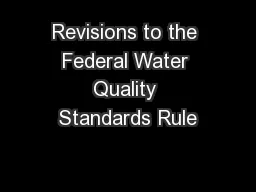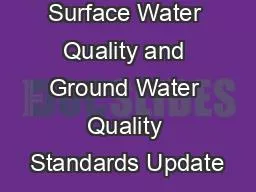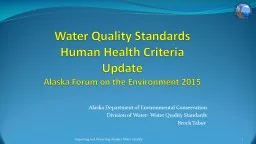PPT-Triennial Review of Water Quality Standards
Author : jalin | Published Date : 2024-01-29
TR17 Updates to Chloride Criteria Presented to Citizens Advisory Council June 21 2016 Patrick McDonnell Acting Secretary Tom Wolf Governor 1 Pennsylvanias existing
Presentation Embed Code
Download Presentation
Download Presentation The PPT/PDF document "Triennial Review of Water Quality Stand..." is the property of its rightful owner. Permission is granted to download and print the materials on this website for personal, non-commercial use only, and to display it on your personal computer provided you do not modify the materials and that you retain all copyright notices contained in the materials. By downloading content from our website, you accept the terms of this agreement.
Triennial Review of Water Quality Standards: Transcript
Download Rules Of Document
"Triennial Review of Water Quality Standards"The content belongs to its owner. You may download and print it for personal use, without modification, and keep all copyright notices. By downloading, you agree to these terms.
Related Documents

